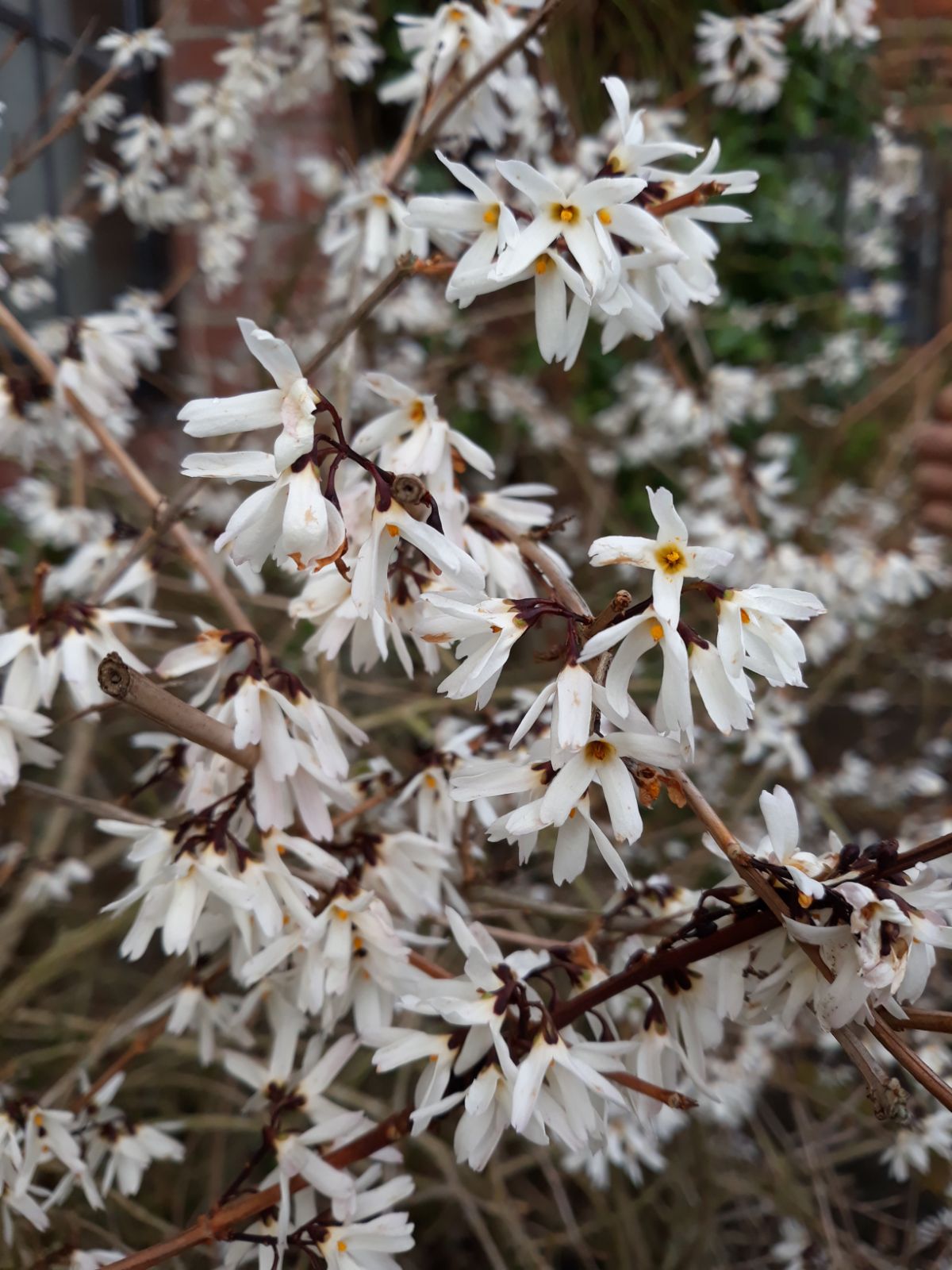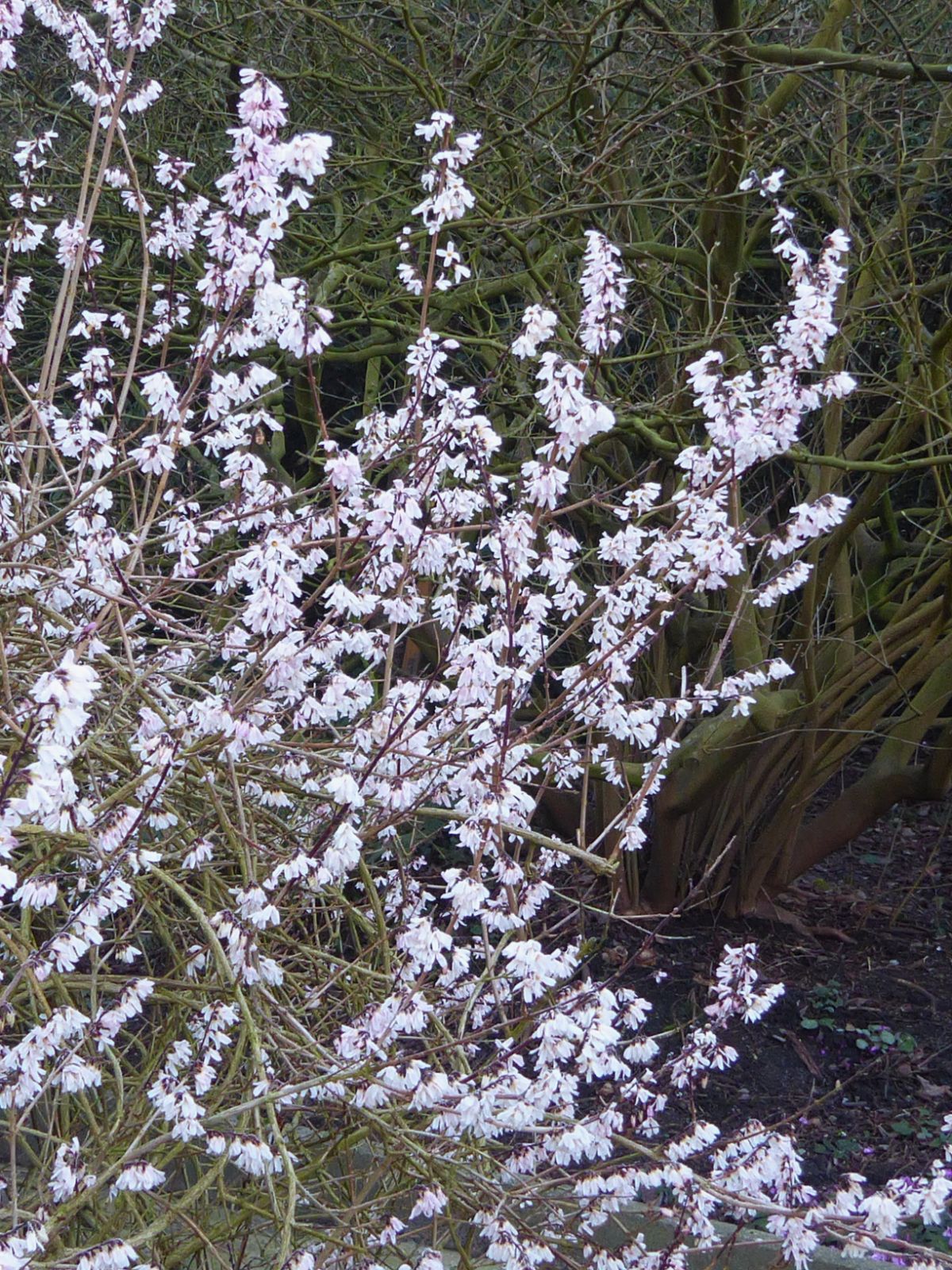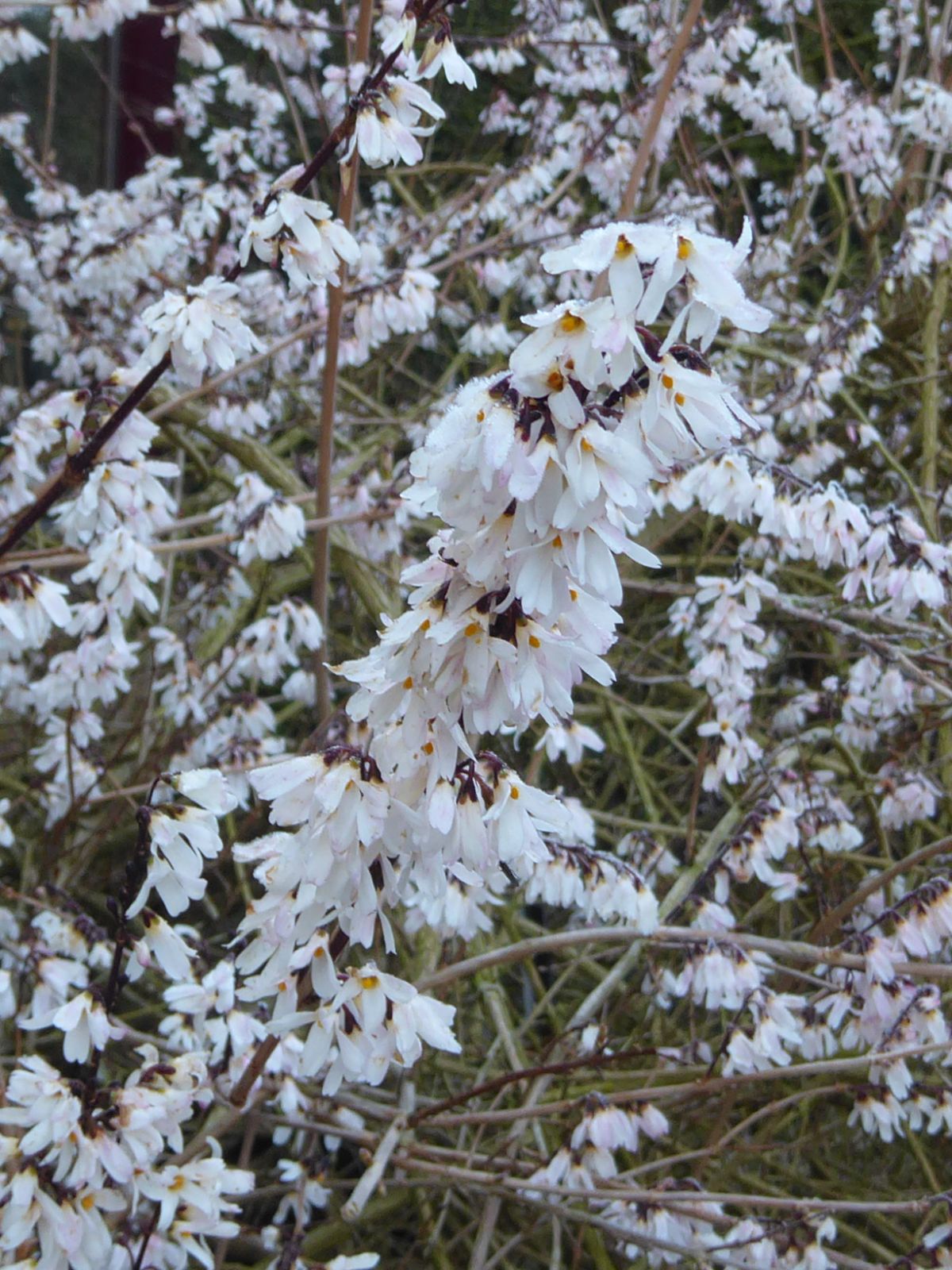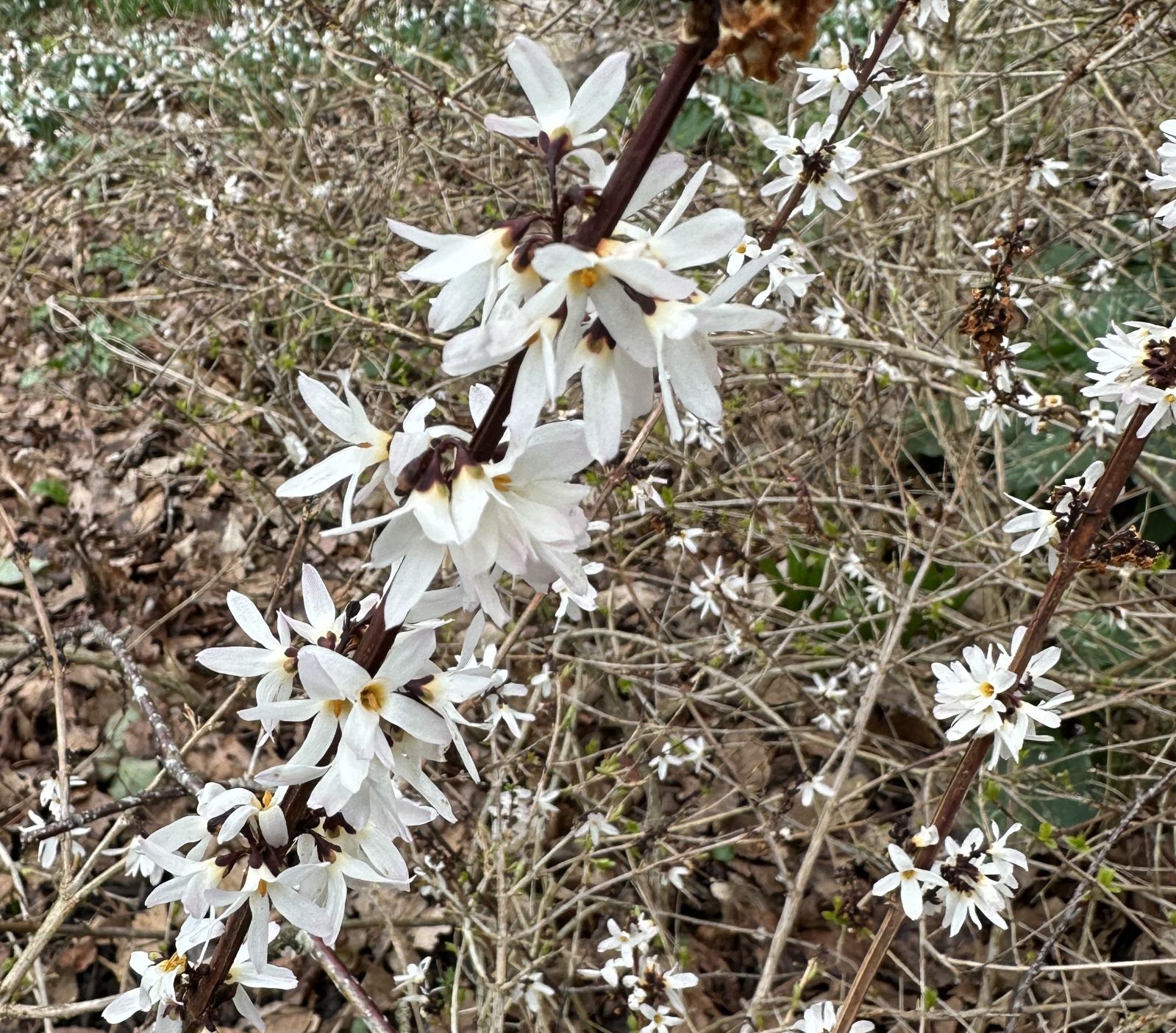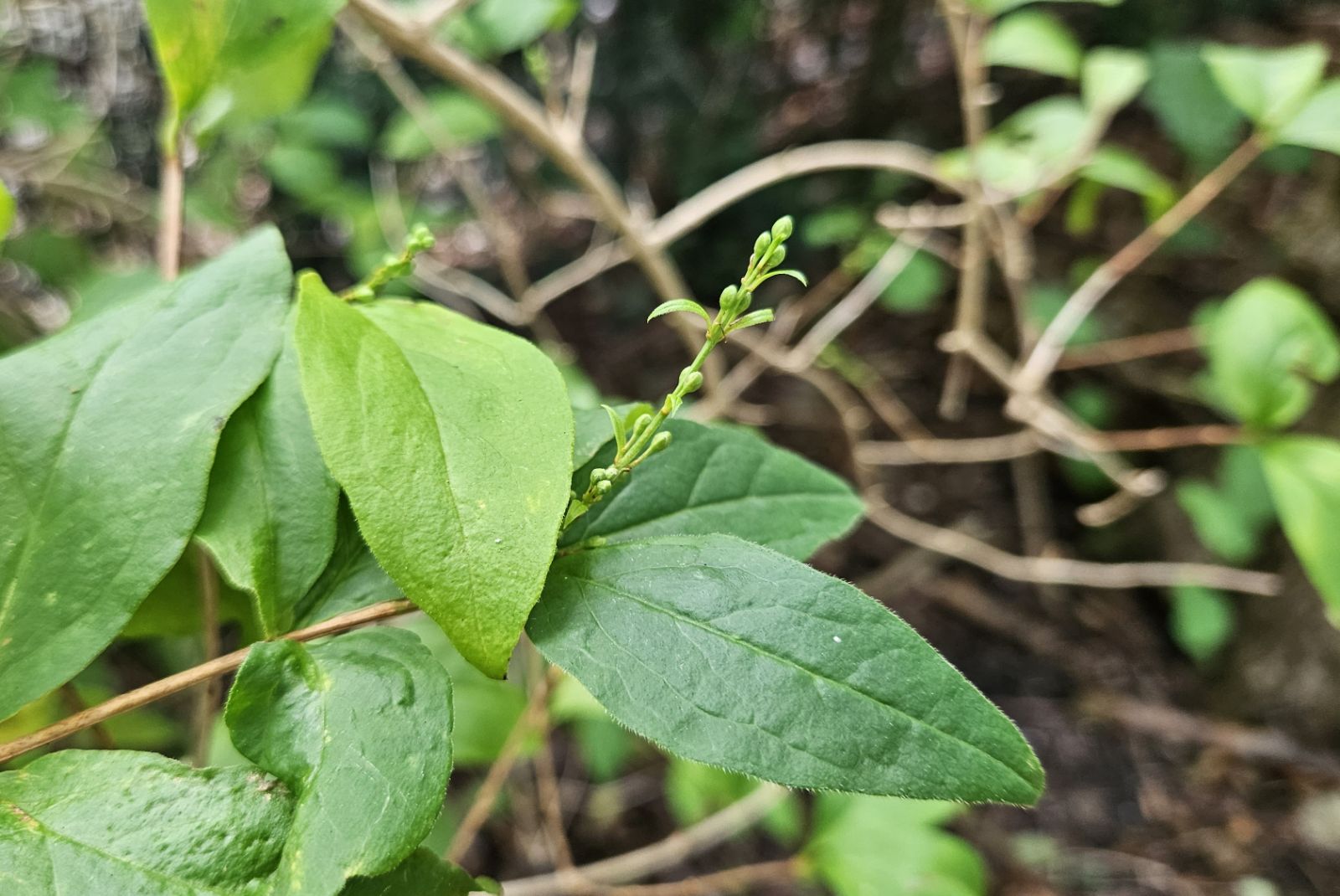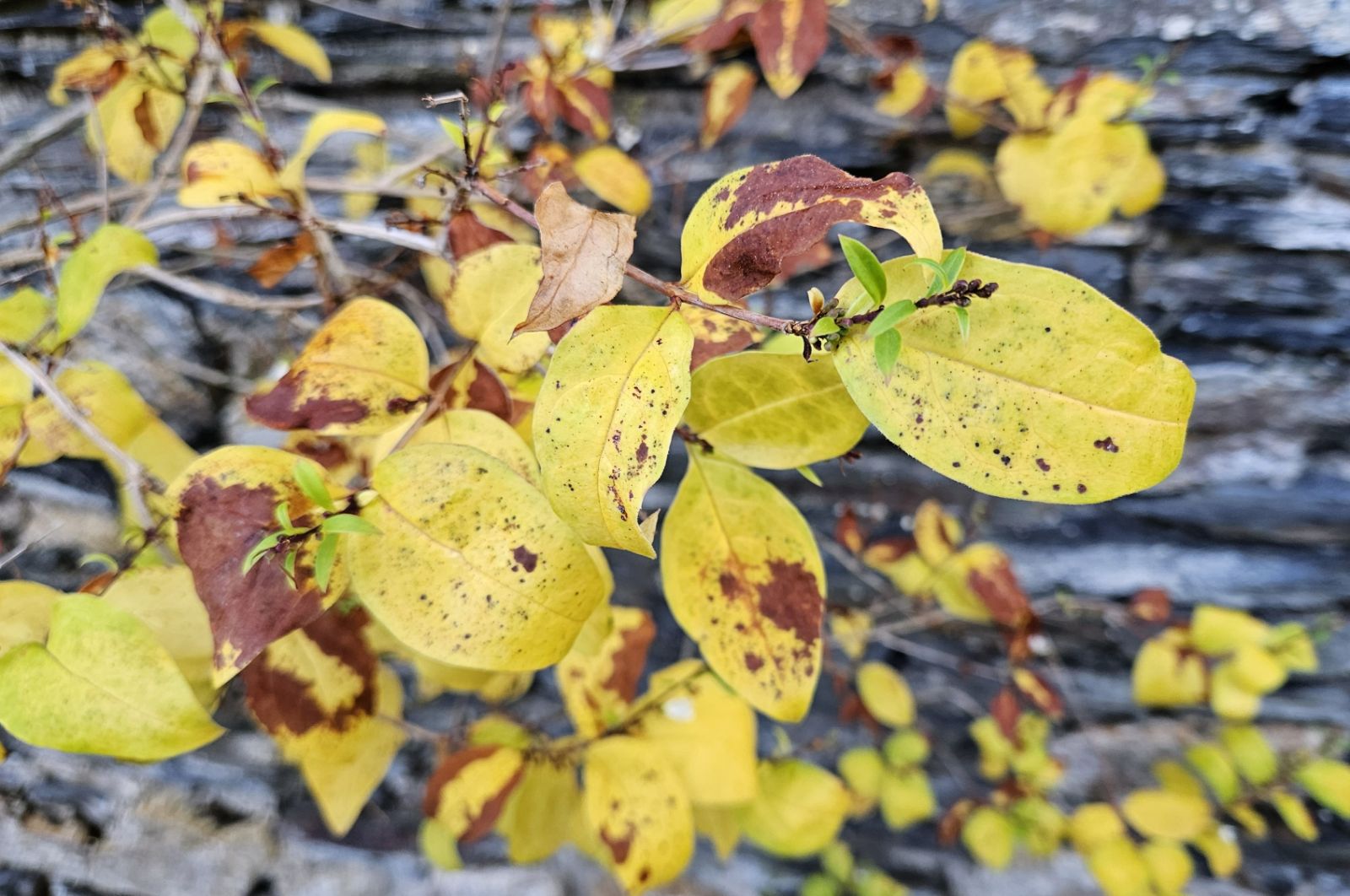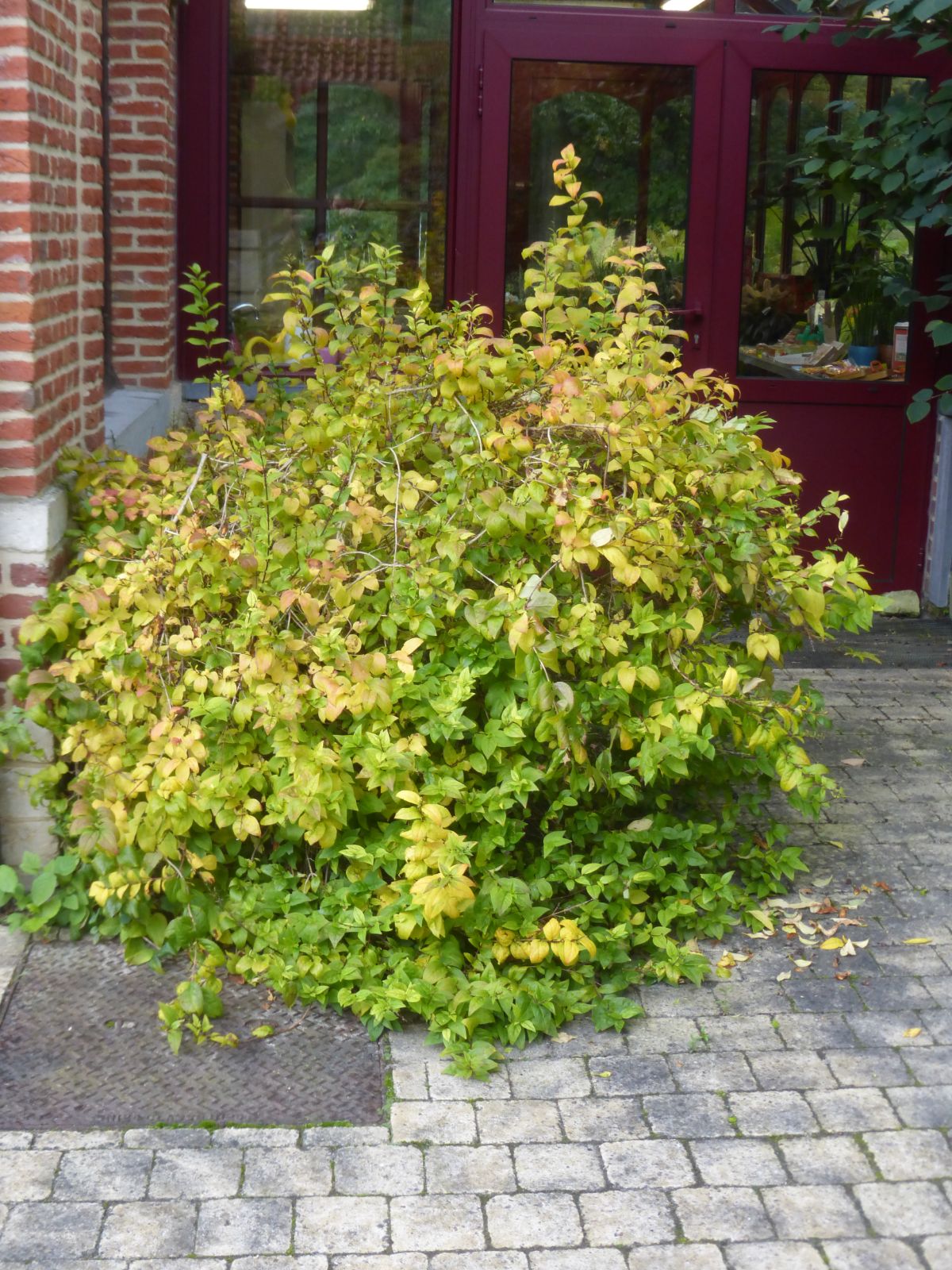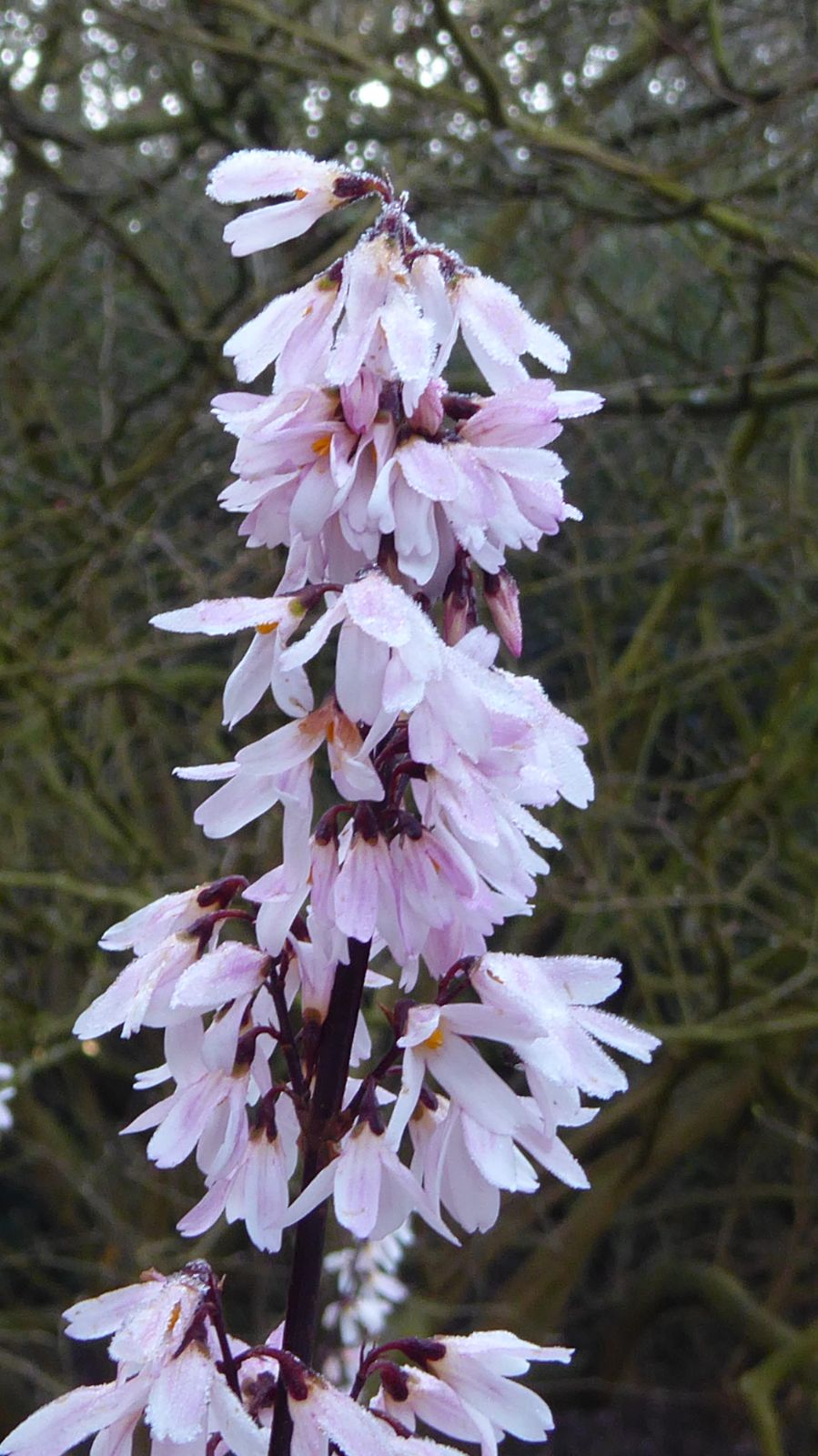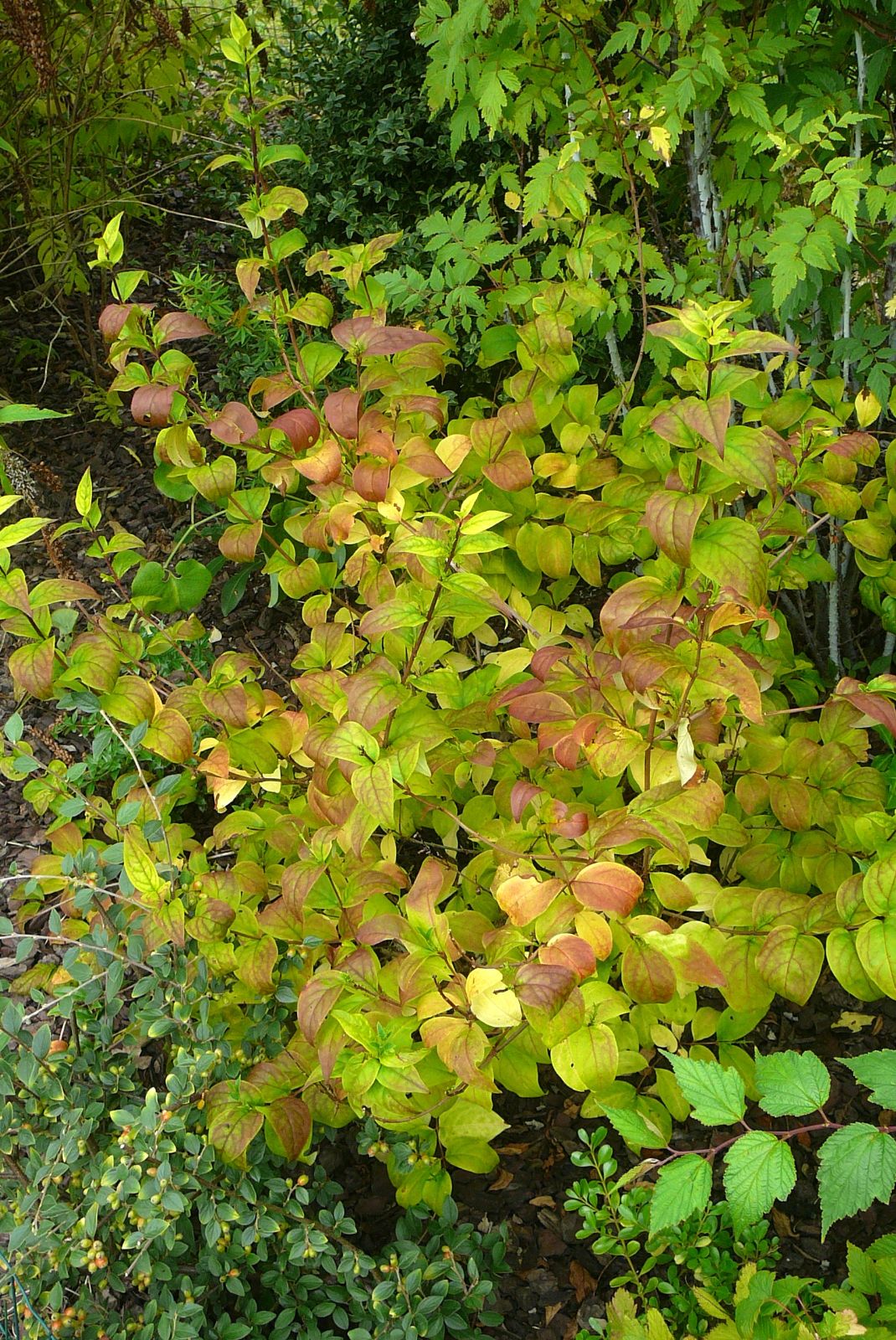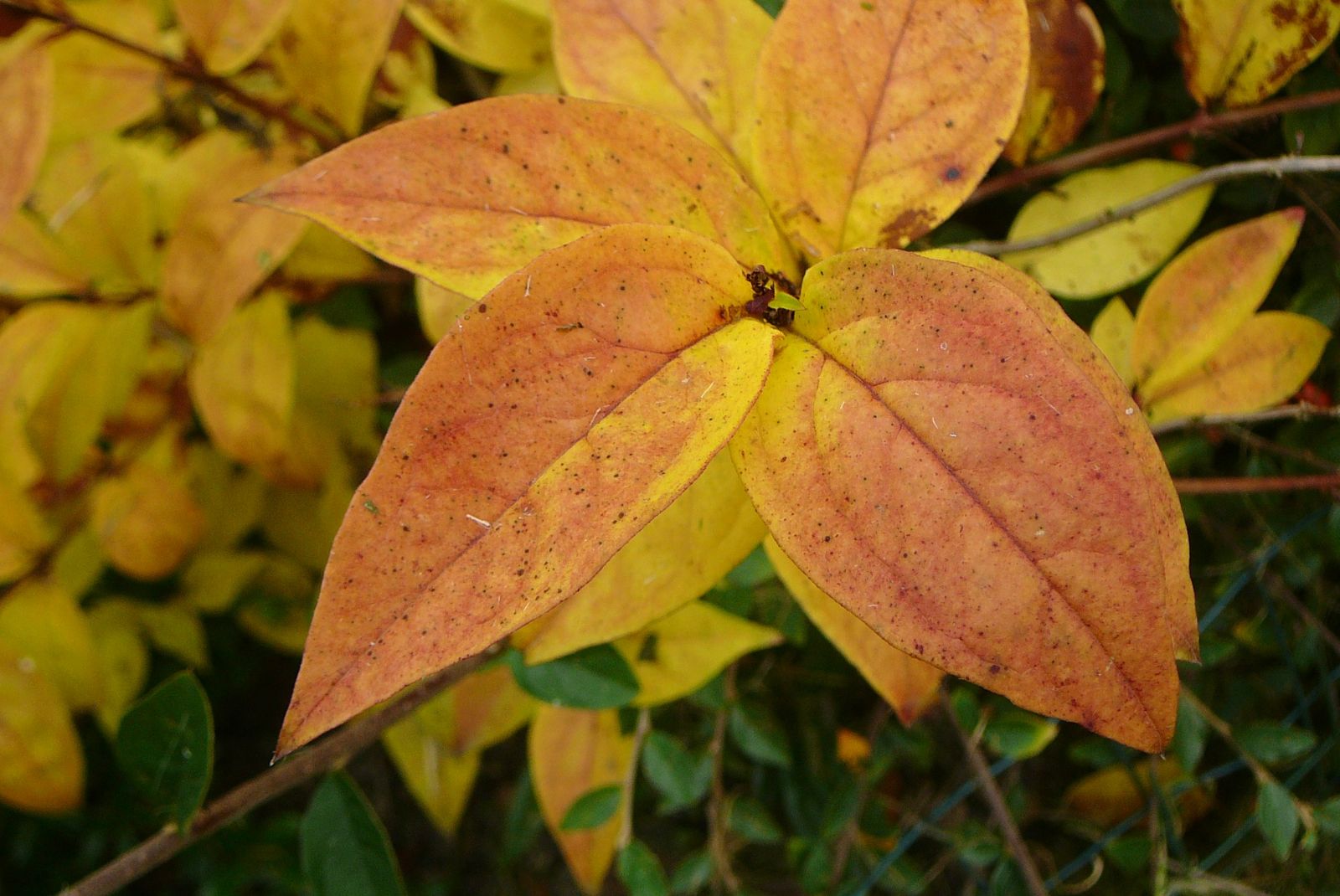Abeliophyllum distichum
Sponsor
Kindly sponsored by
Monique Gudgeon, Sculpture by the Lakes
Credits
Article from Bean's Trees and Shrubs Hardy in the British Isles
Recommended citation
'Abeliophyllum distichum' from the website Trees and Shrubs Online (treesandshrubsonline.
Genus
Common Names
- miseonnamu
- White Forsythia
- Korean Abelialeaf
Other taxa in genus
A deciduous shrub 3 ft or more high; young shoots glabrous, grooved on opposite sides, making them four-angled, slightly warted. Leaves opposite, in two ranks, simple, entire, ovate to oval, 2 to 31⁄2 in. long, slender-pointed, wedge-shaped or rounded at the base, hairy on both surfaces; stalk very short. Flowers white or faintly tinged with pink on opening, borne in axillary racemes 1⁄2 to 11⁄2 in. long of three to fifteen; petals four, oblong, 3⁄8 in. long, 1⁄10 in. wide, notched at the apex; calyx 1⁄8 in. long with four rounded, ciliate lobes; stamens two, anthers yellow, filaments 1⁄12 in. long; calyx and flower-stalk glabrous, very darkly coloured. The fruit recalls that of an elm, being compressed, almost circular, and edged all around with a wing. Bot. Mag., n.s., t. 10.
Native of Korea; introduced in 1924. It is a beautiful early-flowering shrub but comes from a region where, although the winters are much colder than here, the summers are decidedly hotter. For this reason, no doubt, it has not been generally successful as an open-ground plant but might be tried on a wall, as in the R.H.S. Garden at Wisley, where it will grow to 8 ft or more high. The wood deteriorates after a few seasons and should be renewed fairly frequently by pruning heavily immediately after flowering is over. It is propagated by cuttings of half-ripened wood, taken in July, or by layers.

